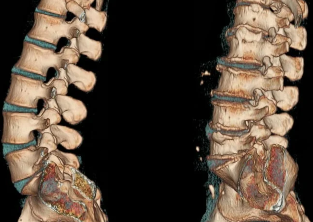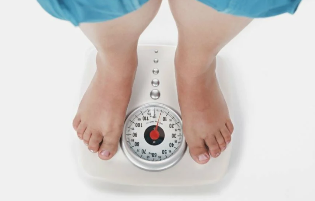The osteochondrosis — a disease of chronic, intermittent, flowing in the background of the constant of degradation that affect the vertebrae and the intervertebral discs. Depending on the location of the vertebrates of the affected structures, degenerative change, are thoracic, lumbar-sacralis pathology, as well as the neck. The main symptoms of degenerative disc disease — pain syndrome, the intensity of which increases with physical exertion, the rigidity of the movements. In the clinical picture are often present spinal symptoms: headaches, racing blood pressure, decreased visual acuity and hearing.

The diagnosis is negotiated on the basis of the results of tools of research of the x-ray, mri, ct scan. In the treatment of osteochondrosis use of different medications clinical-pharmacological groups. To increase their clinical efficacy are performed physiotherapy and massage. One of the basic methods of therapy and prevention is the therapeutic exercise.
The mechanism of development of the disease
On the basis of the pathogenesis of degenerative disc disease there is a loss of pulposus the nucleus of their hydrophilic properties. This semi-liquid of the structure consists of connective tissue fibers and gelatinous substance. As that adulthood occurs the reduction of the vascular bed in each disc between the vertebrae. The entry into it of nutrients occurs is diffuse, that is to say, by the principle, spontaneous alignment of the concentrations. This explains the impossibility of full recovery of the cartilage tissue after an injury or excess physical exercise on the vertebral column.
The processes of the osteochondrosis aggravate the hormonal change and imbalance of the diet. In the cartilage, the tissue does not receive sufficient for their functioning of the amount of nutrients, which leads to the violation following its structure and properties:
- is lost the strength and elasticity;
- changes the shape, the consistency and the setting.
Intervertebral discs m? s flattened, and the fibrous rings to form radial fissures. This becomes the cause of the reduction of the distance between the vertebrae. Little by little, in a pathological process involving the connective tissues fibrous ring, ligaments. In response to the disintegration of the tissues of the immune system starts to produce immunoglobulin, which leads to aseptic inflammation and formation of edema in the area of the joints and are located in the vicinity of the soft tissue. Capsules of joints are stretched, therefore, intervertebral discs m? s no longer securely attach to the vertebrae. And with the instability of intervertebral segments increases the likelihood that the infringement of the nerve root or collapse of a blood vessel. This usually happens when the osteochondrosis of cervical and becomes the cause of what is expressed in the symptoms.
Causes and triggers of the
In the state of the discs between the vertebrae, negatively affecting the lower tone of the skeletal musculature of the spine. Irrational, asymmetric functioning of the muscles occurs when long-term is the person in which non-physiological position, for example, with his head down while you work on your computer. Cause the destruction of cartilage tissues can be continuous use of the heavy bag on one shoulder, sleeping on the soft mattress and mattress high.
Accelerate the destruction of the intervertebral discs, in addition, the following internal and external negative factors:
- endocrine and metabolic disorders;
- conditions of the pathology, especially in chronic;
- prior to the injury in the spine (compression fractures, bruises);
- frequent hypothermia;
- the availability of the system or degenerate-calcifications diseases, gouty, psoriatic, rheumatoid arthritis, osteoarthritis, osteoporosis.

If a person has bad habits, what is in group of risk. Smoking and alcohol abuse worsen the condition of the blood vessels that lead to the lack of circulation and lack of nutrients in the cartilage tissue of the disk.
If you have flat feet or clubfoot increases the risk of developing degenerative disc disease of any localization. Such congenital or acquired defects are the cause of the increase of the load of the spinal column due to the impossibility to guarantee the due repayment with the support. Predisp to the appearance of the pathology factor is obesity.
By postponing the fat in different parts of the body complicates the support of balance, which leads to the effects of excess loads on the intervertebral joints.
The clinical picture
The first clinical manifestation of cervical, thoracic, or lumbar osteochondrosis — pain in the back. At the time of the recurrence is impregnated, radiant, of the nearby part of the body. The less movement to enhance the expressivity of pain syndrome. The response of the person becomes the enforced acceptance of the situation in which the intensity of the shameful feelings is minimal:
- people with neck band of the osteochondrosis prefer to turn towards the head and around the body;
- the chest of the pathology of the person is afraid even to make a full deep breath, as this causes an acute pain in the division;
- patients with lumbar osteochondrosis with difficulty, sit, stand and walk for the breach of spinnomozgovogo of the nerve.
Most of the patients complain of a doctor in the dull persistent pain and feeling of stiffness in the morning. This requires a differential diagnosis to exclude myositis (inflammatory process in the skeletal muscle of the back), and osteoarthritis. The cause of the appearance of the pain, press pain — compensatory tension of the muscle tissues, for the stabilization of the affected spinal-skeletal segment. Permanent pain syndrome of mild or moderate expression also occurs due to the stretching of the intervertebral disc and the development of aseptic inflammation.
For the osteochondrosis of a particular location is a specific feature of the symptomatology. For example, if lumbar spine pathology often occurs sciatica — attack of pain in the lumbar area and the back of the thigh. Chest of osteochondrosis clinically manifests visceral pain in the area of sudden cardiac, right upper quadrant, the stomach, numbness, increased sensitivity of the skin, the crunch of the vertebrae. But the most notable and diverse of the sintomatologa, differs from the pathology, that affects the neck, intervertebral discs m? s.
As a result of the displacement of the vertebrae, the formation of osteophytes compress during vertebral artery that feeds the brain cells, provides oxygen. The man is suffering from a lack of coordination of movements, noises in the ears, headaches, high blood pressure.
That can be in the absence of treatment
Most of the complications of osteochondrosis occur due to the formation of the hernia of the intervertebral disc. Is formed to the displacement of this spinal structure of the back, which leads to rupture of the posterior longitudinal ligament. The disc becomes even more unstable, and part of his bulges into the spinal canal. The explosion is considered to be the hernia, if in the process of their education along with the disk in the channel penetrates the purposee core.
What is the pathological state of the vertebrates of the structures predisposes to compression of the spinal cord and the development of discogenic of myelopathy. Clinically it is manifested in the torpor, weakness of some muscle groups of the legs or arms, paresis, muscle atrophy, change of suhozhilnih of the reflections. It can also be observed disorders of emptying the bladder or bowel. As a result of the formation of betweenvertebralth hernia compressed the arteries that feed the spinal cord. Form ischemic regions in which all died in the nerve cells. Occurs the so-called neurological deficit — rape movement, the decrease of the sensitivity, are uncomfortable trophic.

The tactic of treatment
The osteochondrosis does not undergo complete cure, since up to that no synthesized drugs, the receipt of which would help to repair intervertebral discs m? s and the vertebrae. But in therapeutic schemes necessarily include chondroprotectors — symptomatic of the tool slow-motion. The preference for drugs with active ingredients chondroitin sulfate and (or) glucosamine sulfate (hydrochloride).
The clinical efficacy of these drugs is confirmed by the results of years of research. Reception long-term (3 months to 2 years) of the regeneration part of the cartilage tissue, as well as other connective tissue structures — ligaments, tendons, of the bag. As it builds up in the intervertebral discs of the glucosamine and chondroitin are starting to have the expressed analgesic, anti-edema, anti-inflammatory effect. This allows to reduce the dose of nsaids, corticosteroids, muscle relaxants, thus reducing the load drug in the body.
Medications to the joints are ineffective when irregular admission or its use for the treatment of the osteochondrosis of 3 degree, when it occurs a great destruction of cartilage tissue.
For the solution of the symptoms, usually occurs when the cervical spine or dorsal osteochondrosis, medicines are used to improve the circulation of the blood, nootropics, the drug, improves microcirculation of the labyrinth, as applied to the pathology of the vestibular apparatus.
If it is necessary, to the services schema include antidepressants, anti-seizure medications.
In the treatment of osteochondrosis apply physiotherapy procedures: uhf-therapy, magnetic therapy, lazeroterapija. Used reflexology, massage, physiotherapy, hirudotherapy, the swimming, the yoga. The ineffectiveness of the conservative treatment of the patient shows a surgical intervention. It is practiced to puncture the vaporization disc, your laser of the reconstruction or replacement of implant.
















